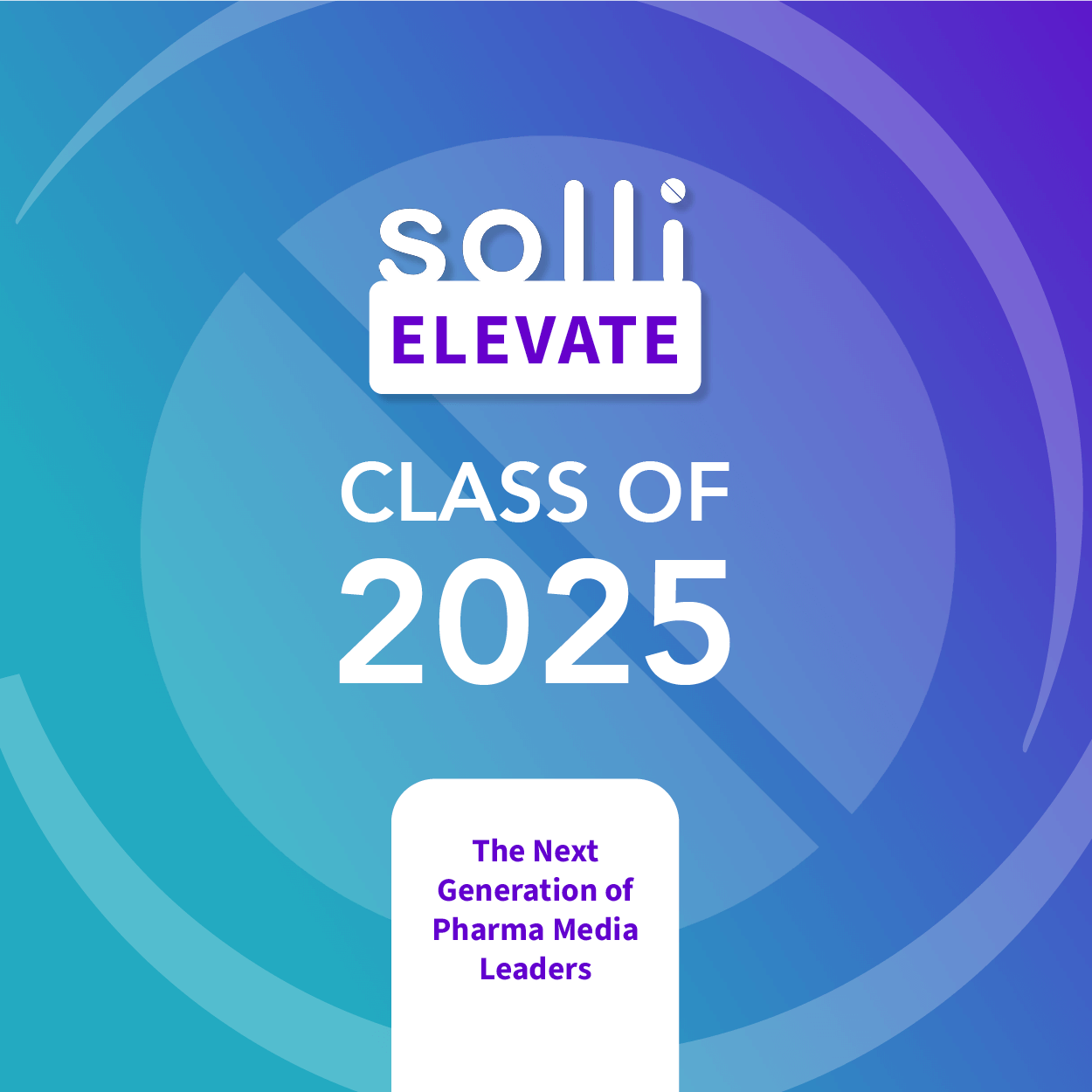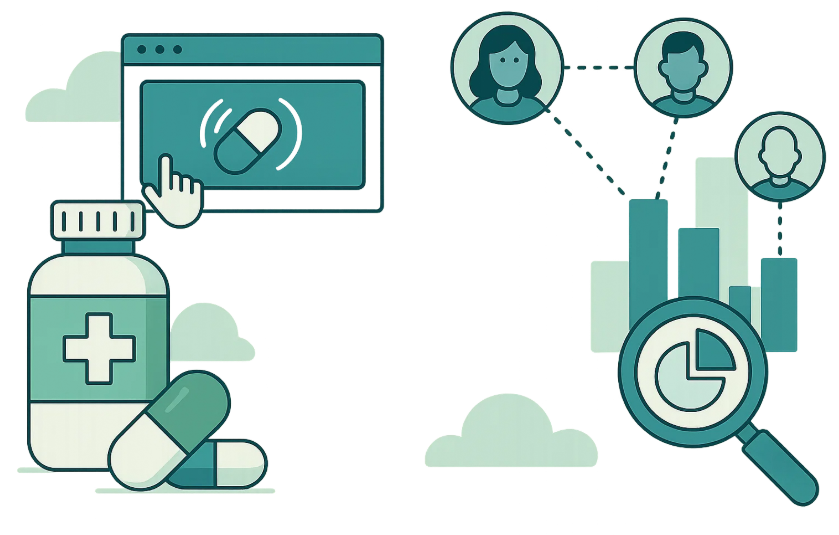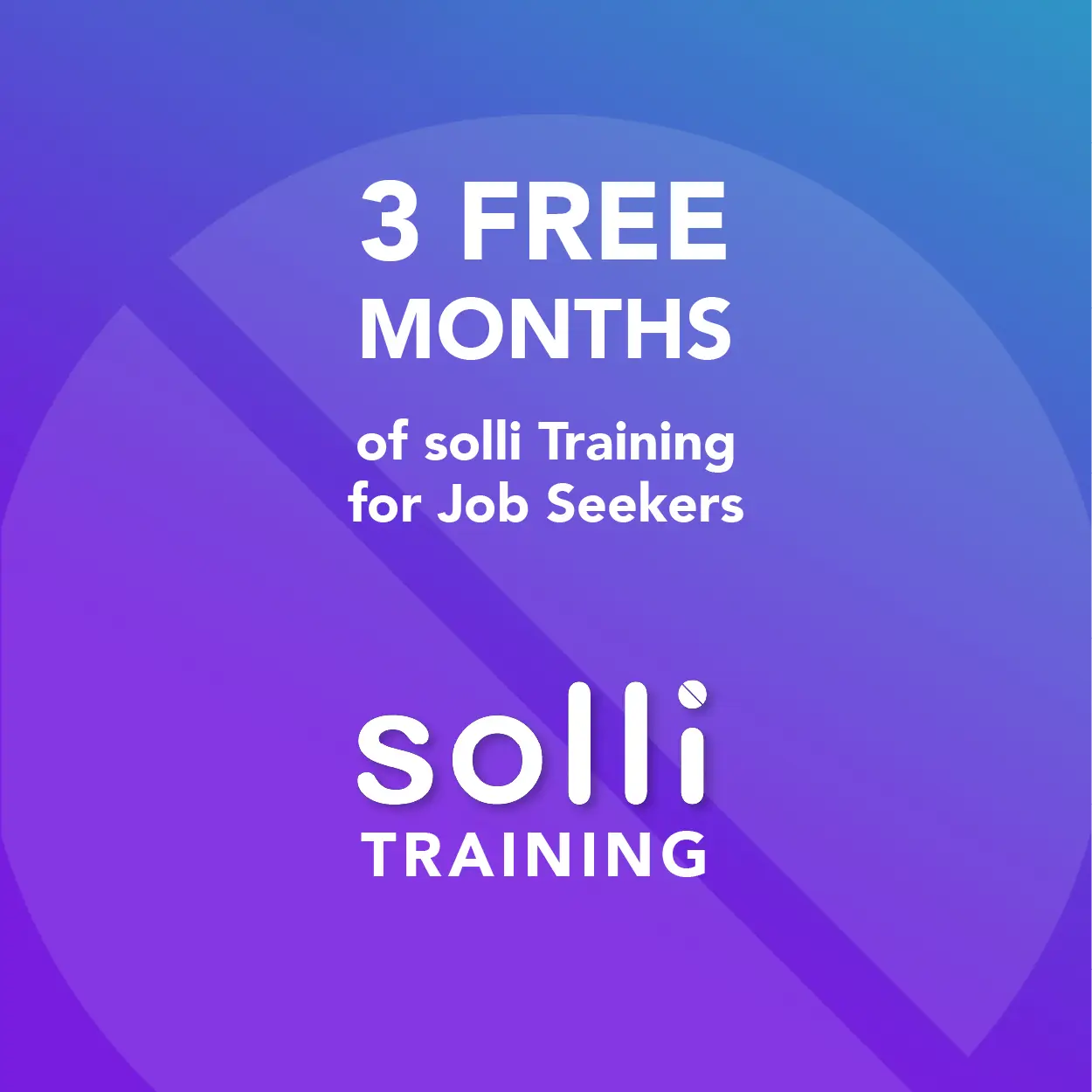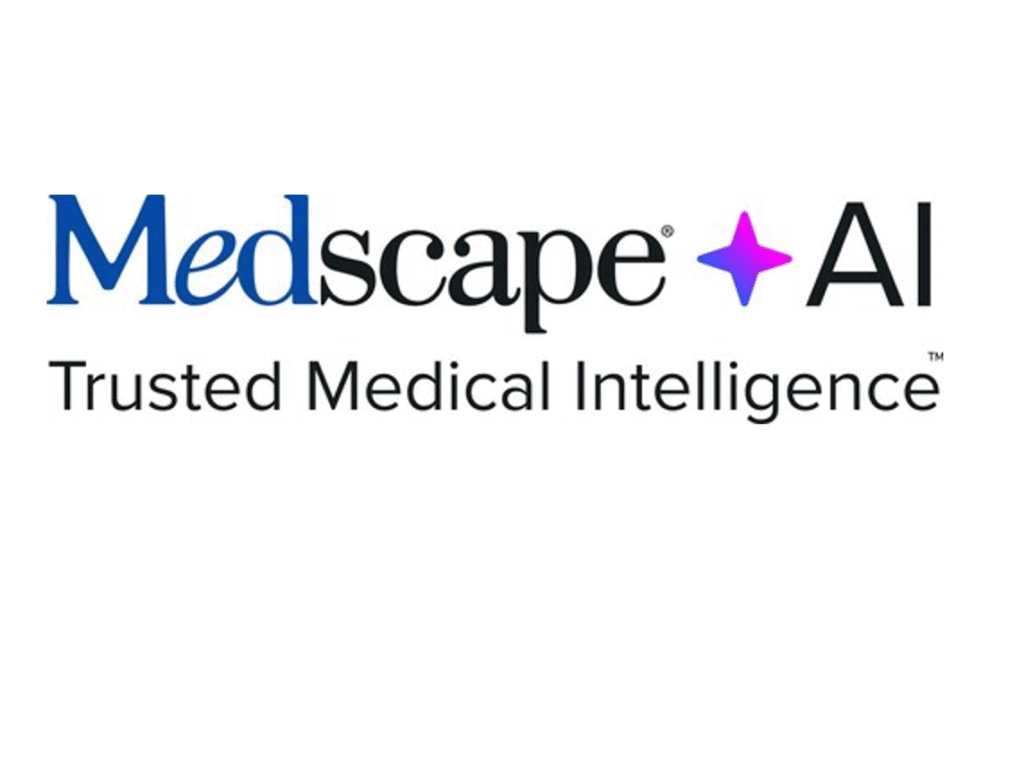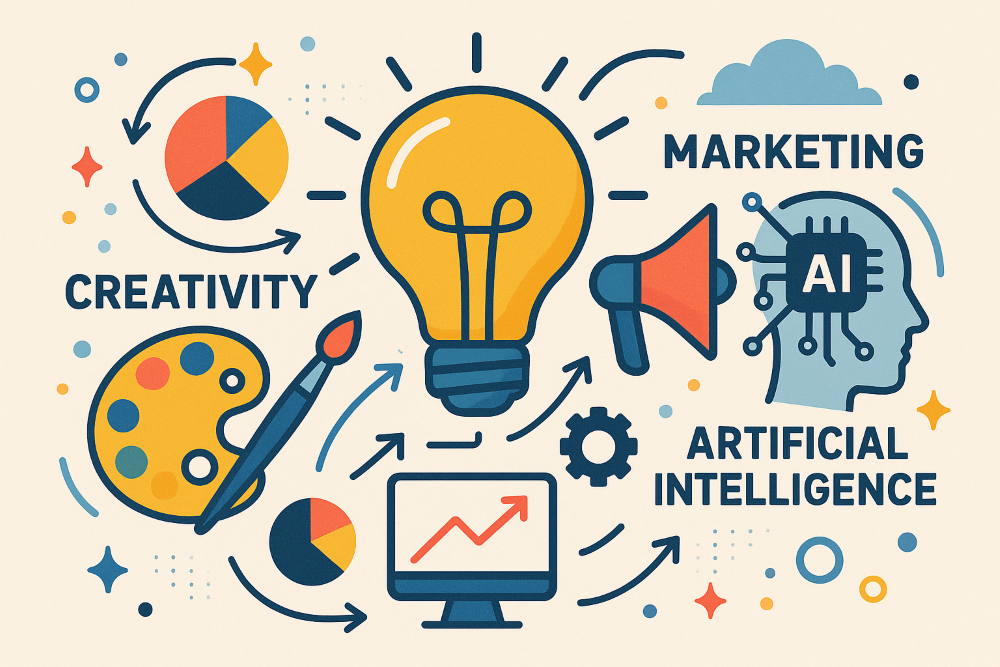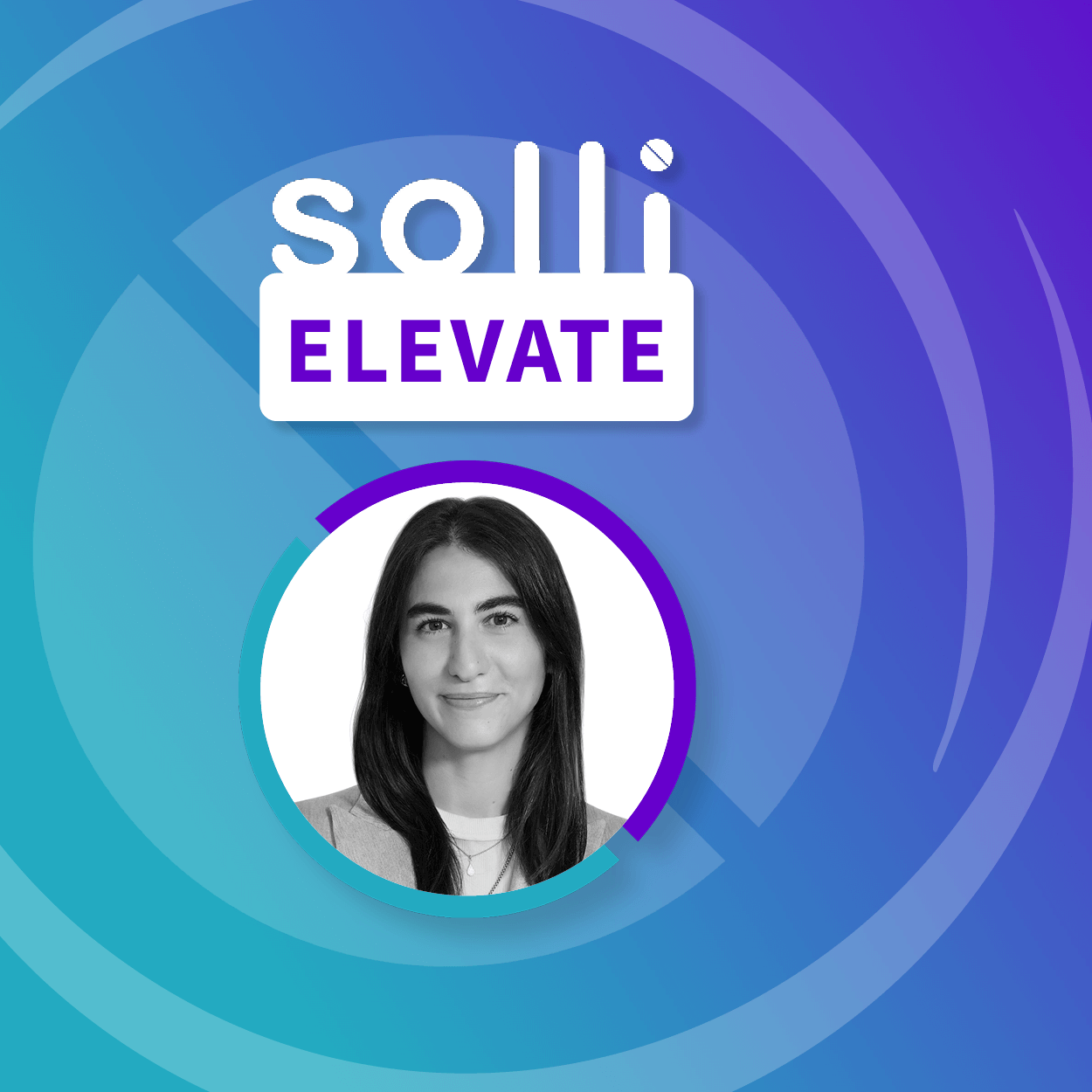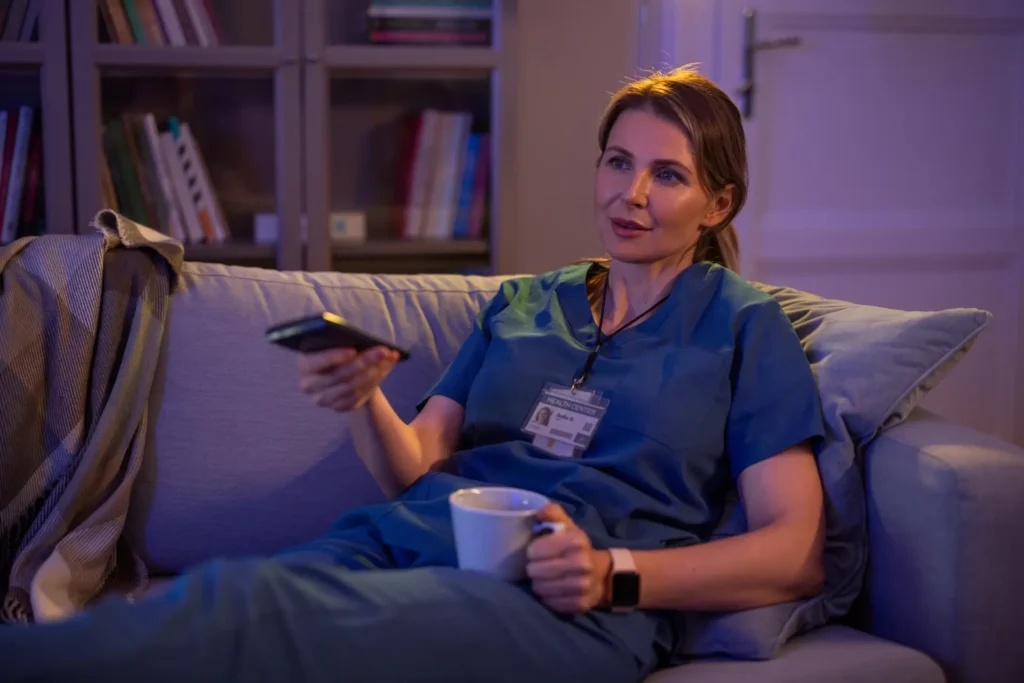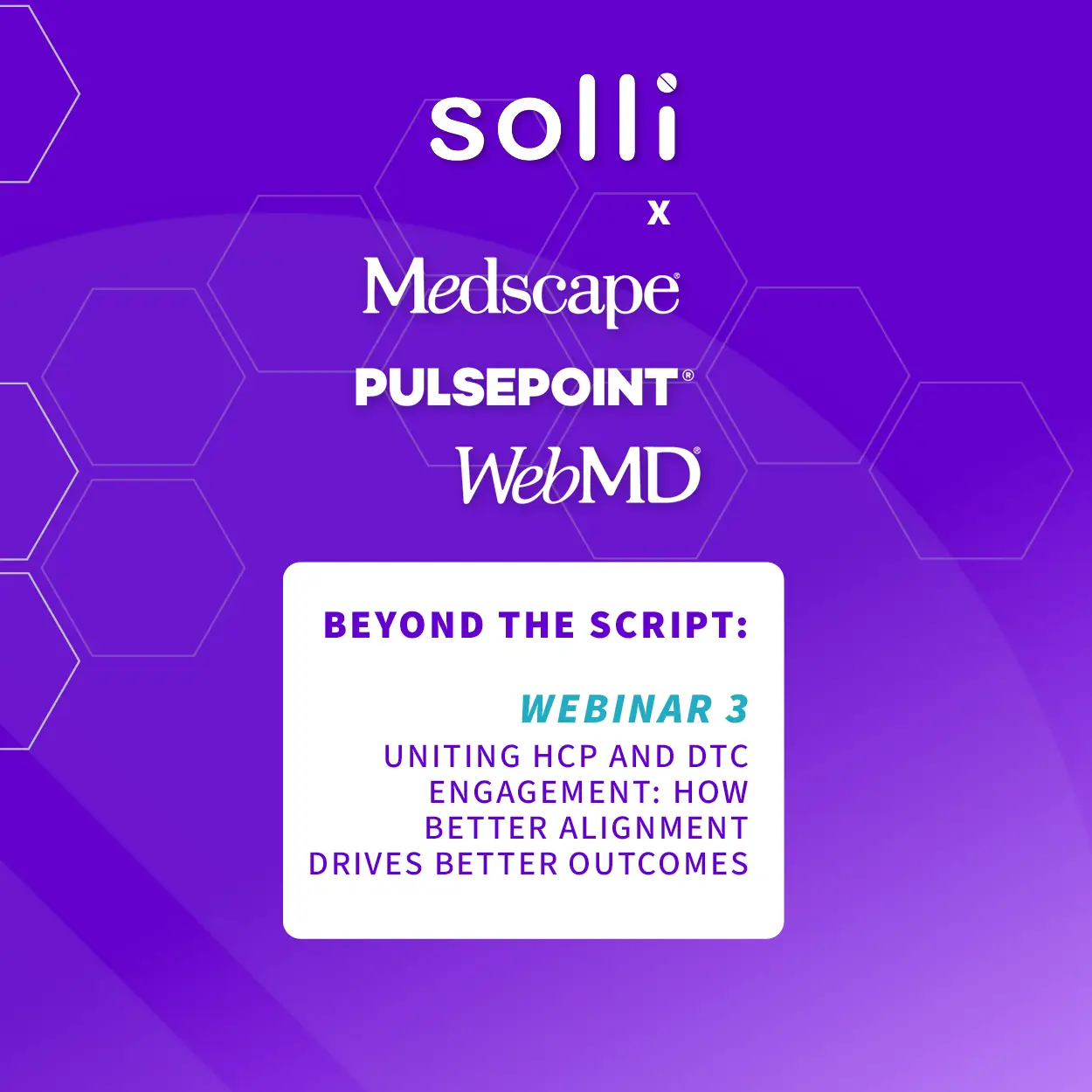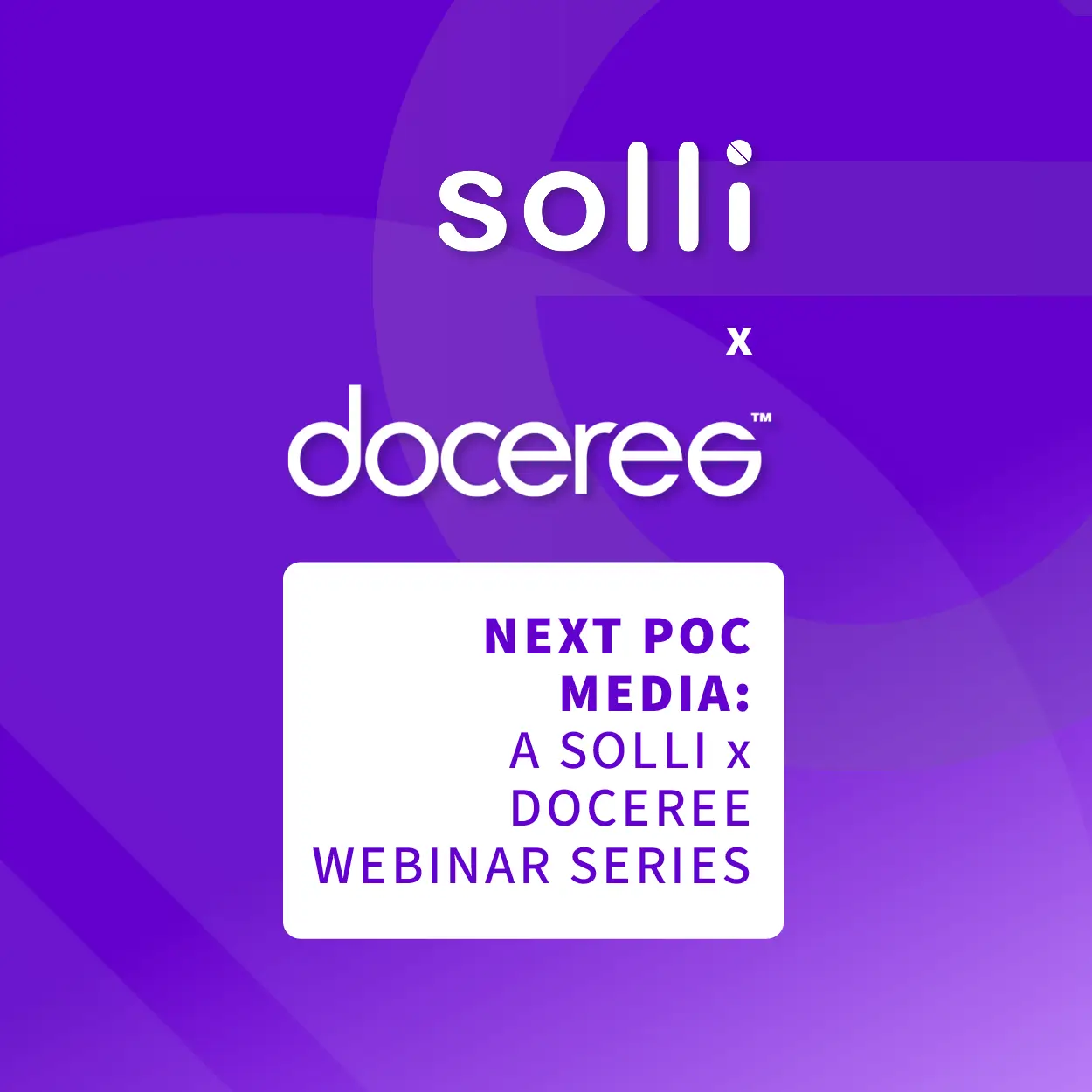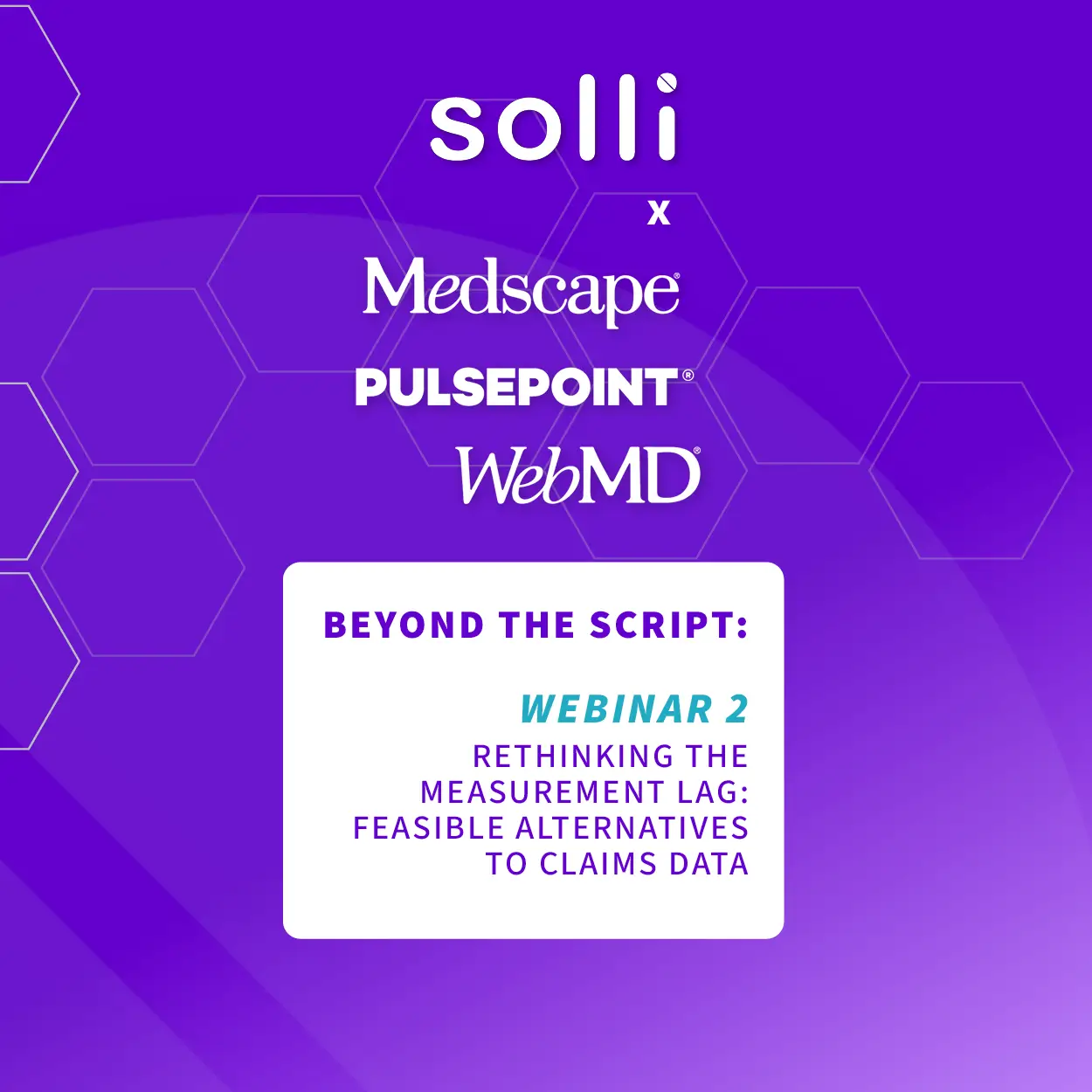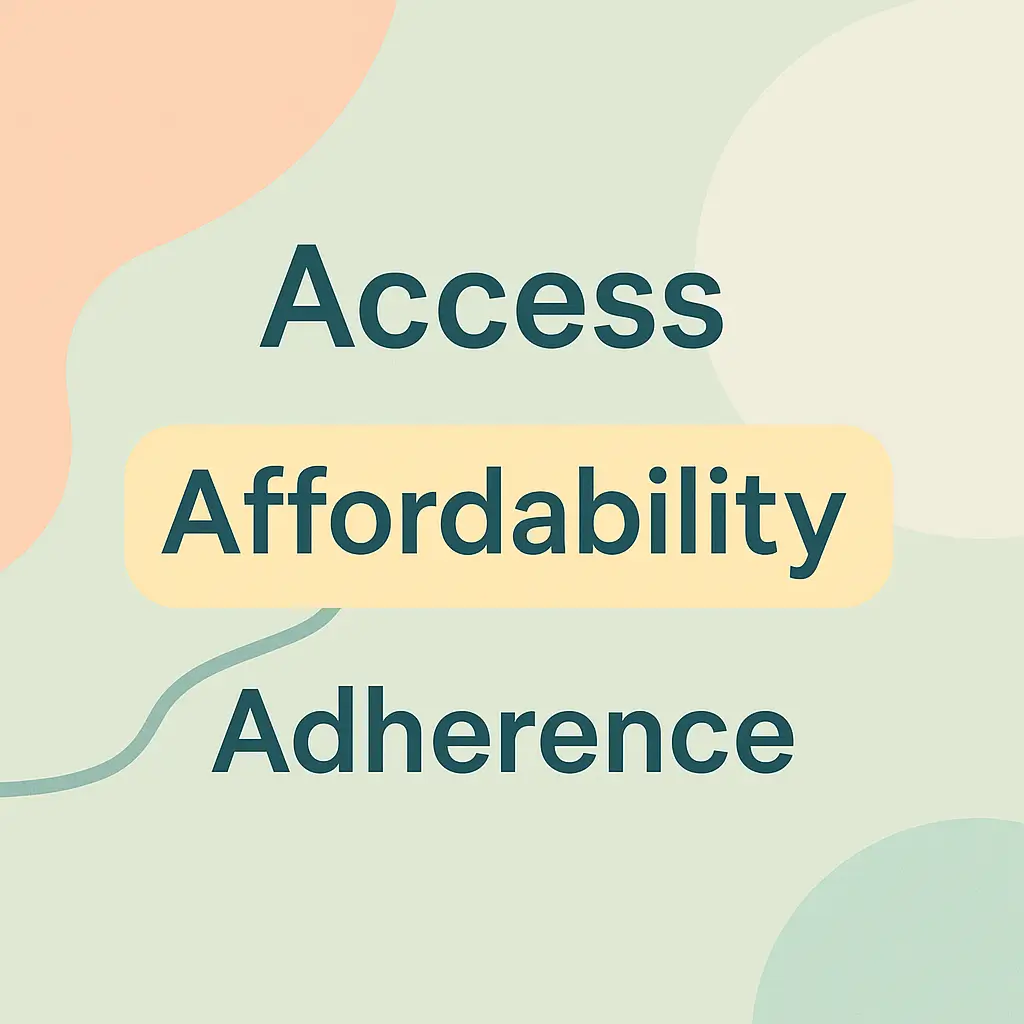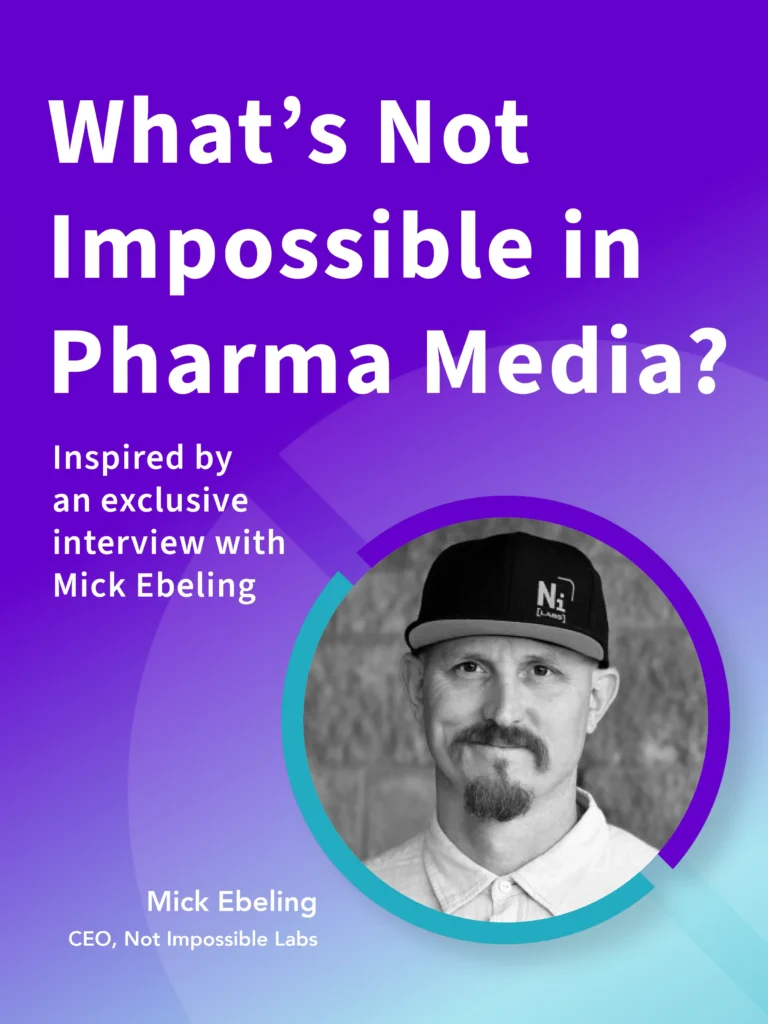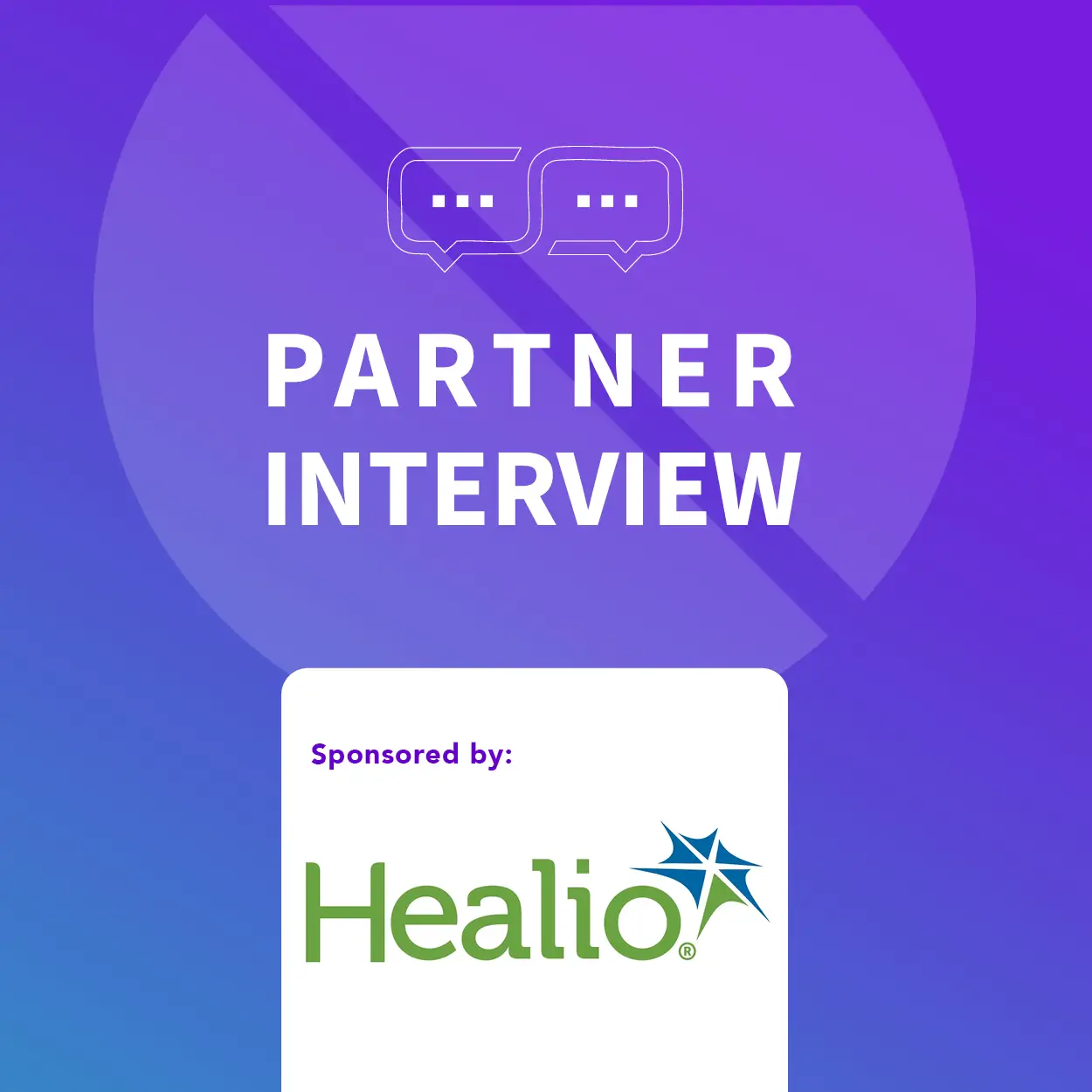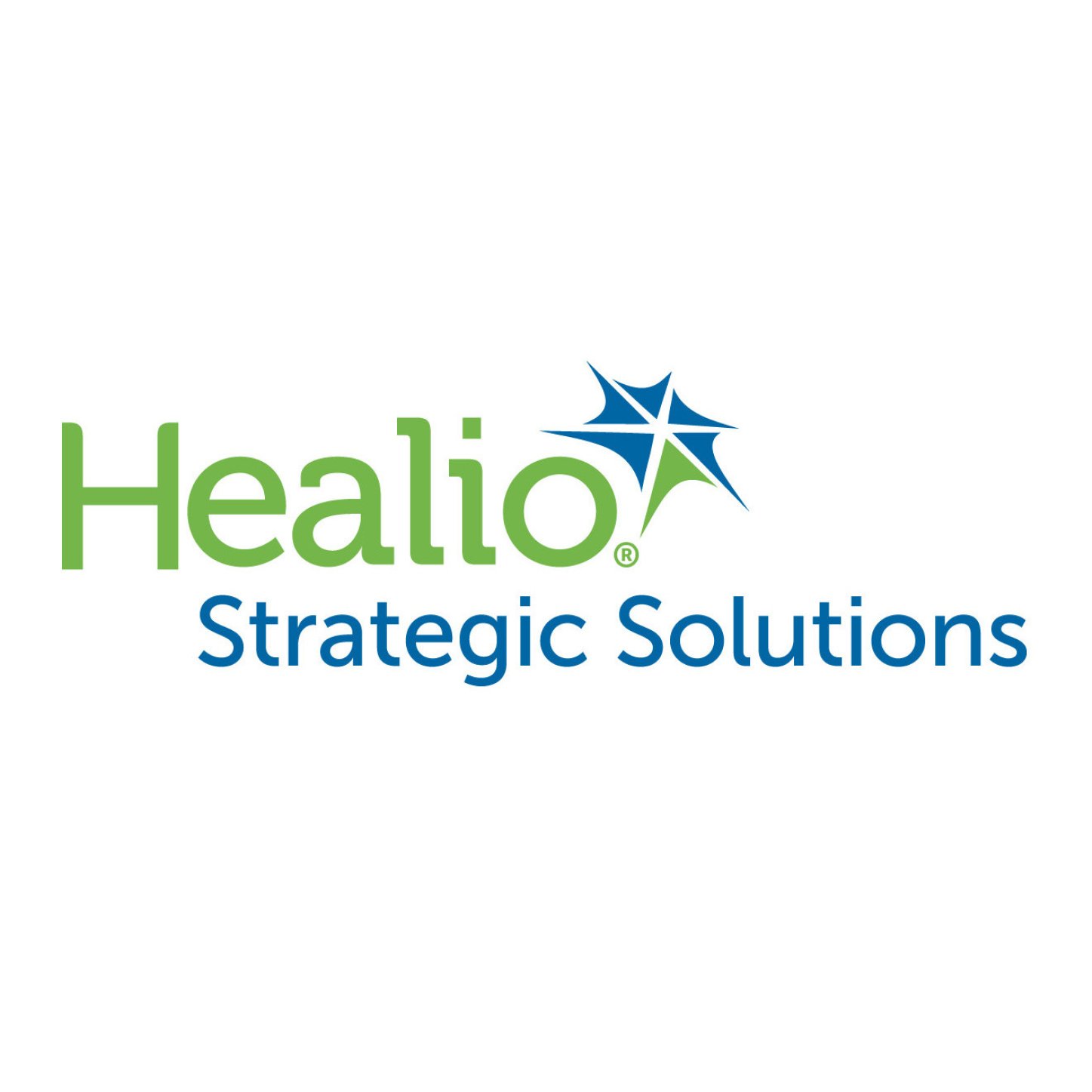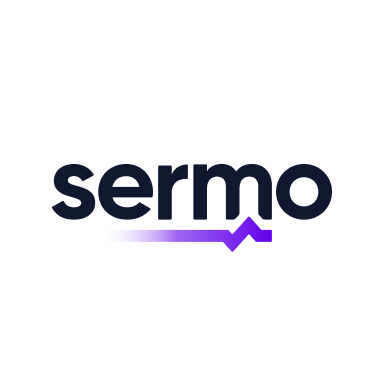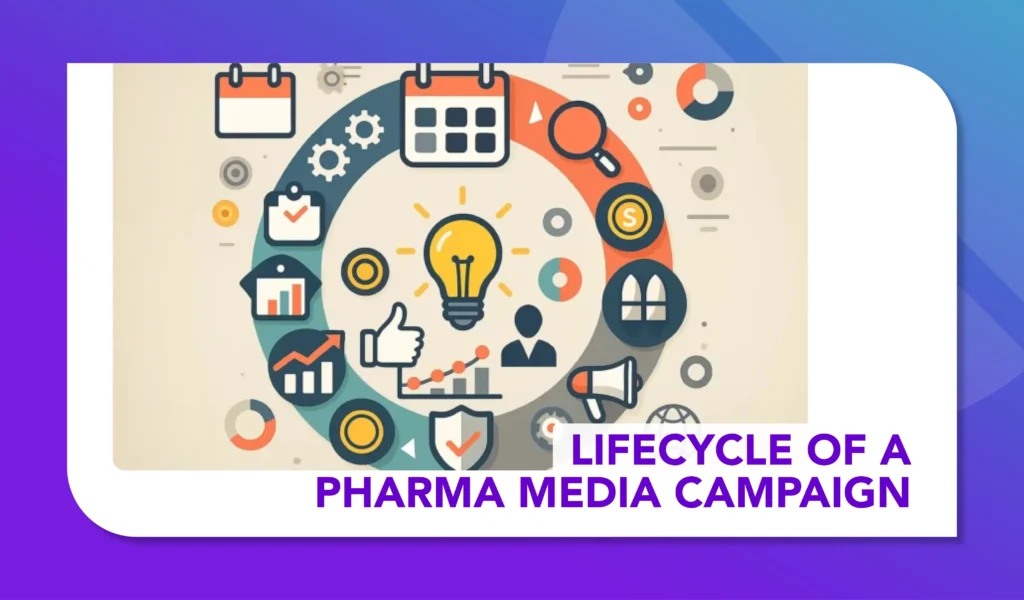Finding the Human Element Amid the Algorithms
The programmatic buying and selling of health media is, ultimately, steered by the humans that enable it. So why does the notion that it’s a machine-driven process still linger?

Spend more than a few minutes of time talking with heads of the programmatic media desks at pharma companies and their partner agencies, and you’ll hear a single phrase again and again: Hands on keyboards. It’s used by leaders of these organizations to express, often with bemusement, the notion that programmatic buying and selling of health media diminishes or even eliminates the need for human oversight.
Which, of course, is ludicrous. Without those hands on keyboards, opportunities can be missed and breakdowns can go unspotted. So why does the idea that humans are extraneous to the programmatic process persist?
“It’s a misnomer that ‘programmatic’ is tantamount to ‘automatic,’” Justin Chase, EVP, Eversana Intouch Media states flatly. “Yes, the number of people I need at a programmatic trading desk to manage a $100 million budget is smaller than if I were doing $100 million in direct buys. But the level of technical acumen is much, much higher. It’s a very demanding job.”
Jordan Galbraith, SVP, programmatic at Publicis Health Media, references a presentation given by Jeff Green, CEO of digital ad platform The Trade Desk. “He compared Trade Desk and similar platforms to an automatic driving car: Just because you have that function doesn’t mean you don’t need someone behind the wheel,” Galbraith explains. “For programmatic, even if you’ve enabled auto-optimization, the platform doesn’t know the nuances that are important to the brand.”
It’s these nuances upon which the success or failure of many pharma campaigns hinges. Envision a basic scenario in which a brand team hopes to connect with a target list of HCPs. The human element comes in the form of quick-response oversight, identifying the messages that are resonating and then boosting them.
Today’s digital media platforms render this scenario far more palatable for the people charged with making those calls – and empower those individuals to an extent that would have been unimaginable two decades ago.
“They have the data in front of them. There’s so much more of a flow of information on a daily basis,” explains Justin Freid, chief media and innovation officer at CMI Media Group. “Back in the day, you got that data on a monthly basis at best.”
Asked about the man-versus-machine divide, Chase hearkens back to his time at Digitas Health in the mid-2000s, during which he bought digital media for Pfizer’s industry-changing ED drug Viagra. Then as now, the company ranked among the agency world’s most coveted clients – but working on its media business, even for a product that rewrote the blockbuster handbook, was a very different experience.
“Everything was contextual. We’d say, ‘Okay, we want to be at Cars.com and GolfDigest.com,’” he recalls.
The problem? That the media team didn’t receive campaign performance data on anything approaching a regular basis. “It was maybe every six months, so we were always playing catch-up,” Chase continues. “That was pharma media forever.”
Until it wasn’t. “I believe that the advent of programmatic in healthcare was, if not the biggest, then one of the two or three biggest watershed moments in the history of the healthcare marketing industry,” he says. “The degree to which we can get ahead of trends is incredible. We almost know what a person is going to do before they do it.”
For this, he credits the algorithms that steer the programmatic buying and selling of health media – but only to a certain extent. Like many longtime programmatic disciples, both inside and outside the pharma realm, Chase scoffs at the notion that programmatic is “set it and forget it.” The most successful organizations plying their trade in the health programmatic realm, he firmly believes, are the ones that bolster, prioritize and otherwise elevate the human element.
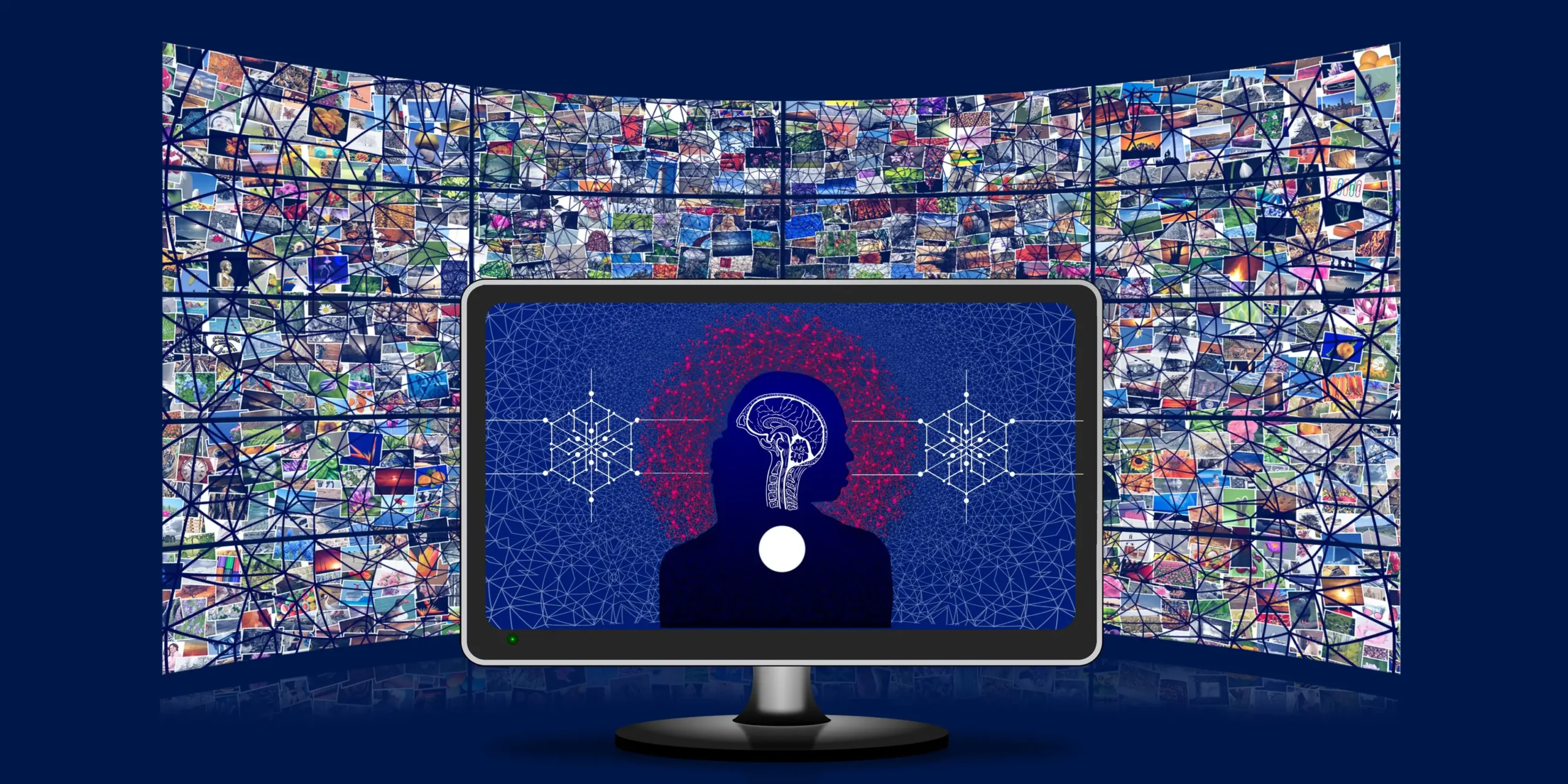
Welcome to the efficiency era
Some of the programmatic-cuts-out-the-pesky-people discourse stems from publishers who once had more latitude to dictate the terms of engagement with pharma marketers. “They were used to selling all their inventory,” Freid notes. “They could charge hundreds of thousands of dollars for a condition roadblock.”
Those days are almost entirely gone, owing in large part to the efficiencies that programmatic technology drives into the buying and selling processes.
“These are essentially auctions, which means the person who’s overseeing them has to know everything about budgets, the competitive set and past optimizations,” Chase says. “Historically, none of that was considered. You’d be talking to a vendor and the rate you were getting was based on your relationship.”
The human element isn’t just about fostering relationships, though. Humans remain the conduit through which companies running programmatic campaigns for pharma clients can ensure that they’re delivering against promised KPIs.
“Sure, you can create custom algorithms that help deliver toward a KPI,” explains Ray Rosti, president of Klick Media at Klick Health. “But when you look at things like inventory quality – the value of the exposure where you’re delivering ads – and the more traditional ways of looking at media delivery, those in many ways still need a human element.”
In health media’s nascent omnichannel era, that imperative is even more pronounced. Prioritizing audience segments, parsing first- and third-party data sets – these are not tasks that can or should be fully entrusted to machines.
“They require people talking to one another across channels,” Rosti continues. “And then there’s the lens of really trying to get closer to understanding where an individual is in their journey. Is it the first time we’re reaching them? Have we seen them engage in health-related content or on the client’s website?… And what do we say to them when we see them a second or third time?”
In short, programmatic media buying and selling require just as much human oversight, in the form of strategic forethought and techno-nurturing, as “regular” buying and selling did back in prehistoric times (read: 2004 or thereabouts). Algorithms don’t do nuance; without keen attention to detail, media programs can go sideways in a hurry.
This, in turn, has served to empower the strategists who play a relatively unheralded role in the programmatic process. Freid argues that a significant portion of programmatic buying would more accurately be described as “executive programmatic” buying, owing in large part to the influence of the strategy teams empowered to tweak these campaigns in near real-time.
“They’re the ones creating messaging for various microsegments, which could be around medication cost or side effects or any number of things,” he explains. “From how we’re buying media to what we’re communicating to people along their journey, you need people who can bring that thinking and humanity.”
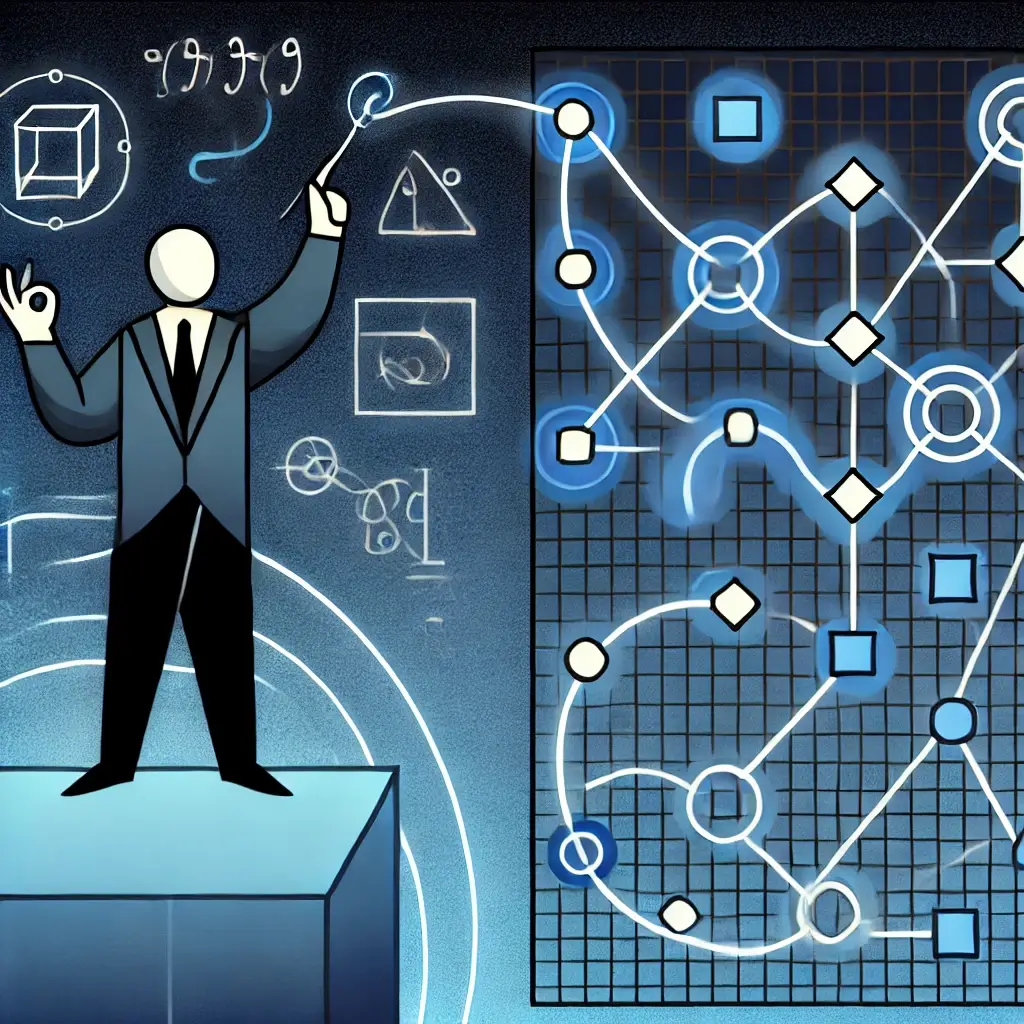
Still a need for education
It’s worth noting that, despite the dominance of programmatic media in the digital space, not everyone is a card-carrying acolyte. The key to winning over these remaining skeptics is remembering that they might have come of professional age in a different era, then putting in the time to educate them on programmatic’s myriad charms.
Take the relatively simple (in theory) task of media plan budget allotment. In many cases, “programmatic” is just a single line item. But, as Rosti notes, quite a bit is packed into that line, which requires a degree of hand-holding.
“As clients start to realize, ‘Hey, there’s a lot going on in this one line item,’ they’re asking questions and we’re proactively trying to educate them on programmatic, in the sense that it’s just a different way to buy media,” he explains.
Questions abound – about whether a programmatic vendor has access to unique inventory, about transparency in data fees and more. The ability to answer those questions patiently and thoroughly often transcends the appeal of any particular price or product.
“It’s harder to understand than many other facets of the media industry,” Chase says. “Look at how out-of-home is bought and optimized. You have a vendor and you negotiate a deal. Even as an outsider, you can see all the activity that surrounds this.”
Rosti agrees, adding, “I think it all comes back to who [a client] has worked with in the past and how the channel has been positioned and why it was positioned that way. Eventually they start to realize, ‘Oh, this is all just a tool to buy [media] and it’s plugging into the same sources.’ Then we can start to pull back the curtain for them to really understand how programmatic works.”
The task of converting the nonbelievers has eased considerably in recent years, aided by an influx of digital natives into health media teams.
“It helped when some really smart people entered the market – DeepIntent, PulsePoint, so many others – because they saw an opportunity to take what was working really well in other verticals and bring it to pharma,” Freid notes. “But the part that’s sometimes not mentioned is clients starting to have a little bit of a different mindset in hiring. They became more open to non-pharma people who understood the benefits programmatic offered in terms of flexibility.”
Indeed, it’s worth remembering that programmatic teams don’t exist in a vacuum. Even if the individuals populating those teams truly wanted to hand over media responsibilities to the algorithms and call it an afternoon (once more, with feeling: They don’t), they would still need to navigate the expansive web of creative and marketing partners with a vested interest in the matter.
“At the end of the day, you’re all trying to work toward the same goal of engaging a potential patient or physician and communicating something to them that’s going to drive engagement and behavior change,” Rosti says. “That gets harder when the connectivity of teams and the ways of working aren’t established… It’s a connectivity issue.”
In other words, the media, tech and creative people who cross paths with the programmatic team on a daily basis similarly need to be brought into the fold. The best partners, Freid notes, have gotten over their concerns about territoriality and embraced the opportunity for their people to play a larger role in the programmatic process. By way of example, consider a company that has created multiple variations on a single creative strategy.
“They set the overarching messages, but we take that creative and tailor it to a very specific nuance. We layer the location data, the contraindications and the side effects, and we make small tweaks so that the program stays on brand and on target,” Freid adds.
The cruel irony is that one potential limiting factor in the growth of pharma programmatic could be, well, the human element. There are only so many people who can credibly claim expertise in this niche, which straddles health, marketing, technology and media.
“We recently brought in somebody who used to do programmatic in luxury goods. It took her six months before she felt comfortable,” Chase recalls. “What she tells us now is, ‘I can do luxury in my sleep, but the personal engagement level you have to have in pharma marketing, specifically media and programmatic, is off the charts.’ You have to be as much a technologist and a data person as you are a media person.”
Galbraith agrees, adding, “Programmatic is going to become a bigger need for our clients over the next couple of years. Nobody doubts that. The issue is that we’ll need more smart and attentive and curious people to meet the demand.”
Larry Dobrow has worked as an editor and writer for a broad range of marketing, media and pop-culture publications, including MM+M, Ad Age, PRWeek, CBS Sports, AARP, American Way and MediaPost. He is the founding partner of D4 Content Group, a health and wellness media consultancy.

